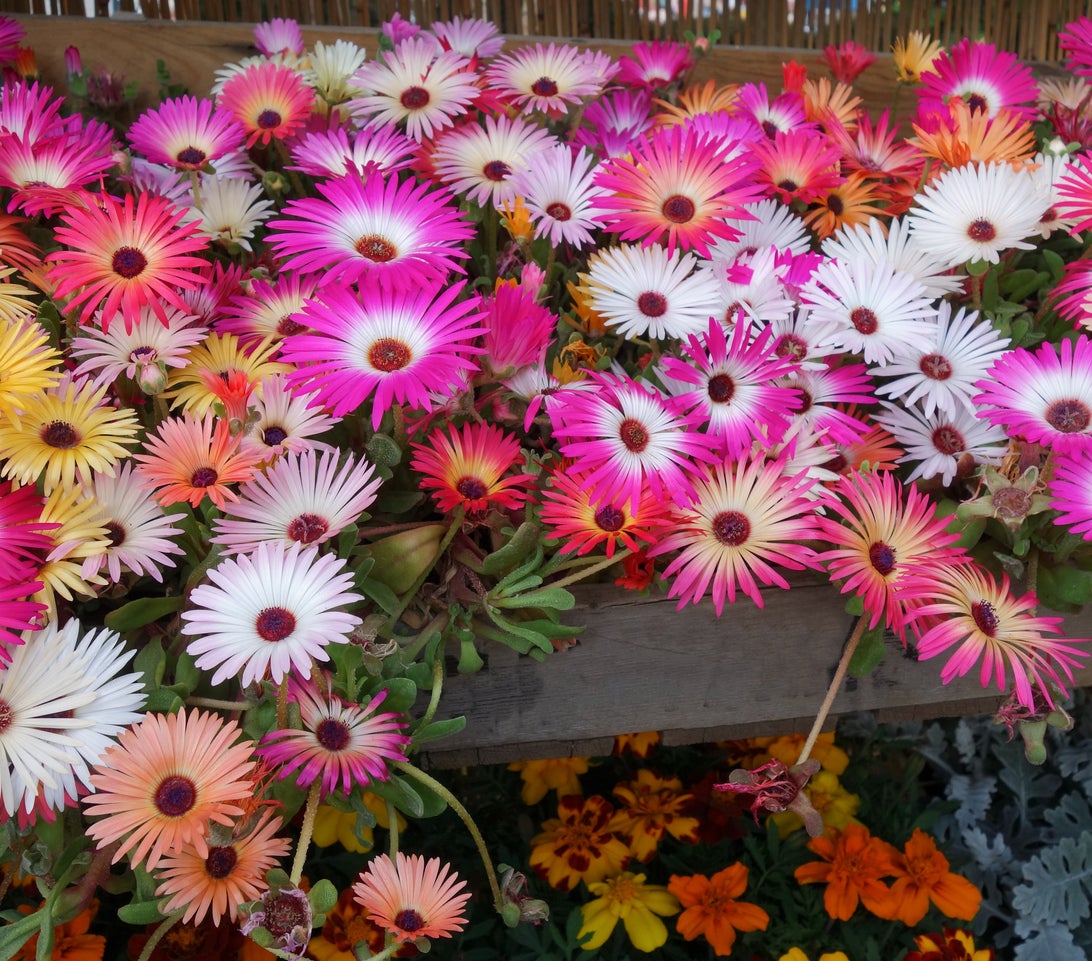Mesembryanthemum Plant Info: How To Grow Mesembryanthemum Flowers


The genus Mesembryanthemum is part of a current popular trend in gardening and houseplants. These are a group of flowering succulents. Their fleshy leaves, unique shapes and colors, and low maintenance requirements make them a great choice for gardens and containers. Learn more Mesembryanthemum plant information here to start growing your own.
What are Mesembryanthemums?
Mesembryanthemum plants are members of a genus of flowering plants that are native to several areas of southern Africa. They are considered succulents because of their fleshy leaves that hold a lot of water, like cactus. They are also called ice plants because the leaves in this particular genus are often shiny and glistening, like ice.
Not only do the Mesembryanthemums have interesting and attractive foliage, they have pretty flowers. In spring or summer, they will bloom with colorful, daisy-like flowers in red, yellow, white, pink, and other colors. Mesembryanthemum flowers can be clustered or single and tend to be long lasting.
The plants grow 4 to 12 inches (10-31 cm.) tall and some spread out horizontally. The shorter varieties make a pretty groundcover, while the taller plants are great for edging and in rock gardens.
Mesembryanthemum Plant Care
Like other types of succulents, Mesembryanthemum plants need warm conditions and don’t tolerate overwatering or standing water. For growing Mesembryanthemums outdoors, you don’t have to live in the tropics or the desert, but you do need frost-free winters. If your winters are too cold, these plants do take well to containers and indoor environments.
Provide your Mesembryanthemum plant with soil that drains well. A sandy, cactus mix will work. If growing in a container, be sure the pot can drain. Outdoors, these plants will tolerate dry, poor soils and even salt. Provide a mostly sunny spot or full sun. Indoors, a bright, sunny window should suffice.
To water your Mesembryanthemum, soak the soil totally but then don’t water again until it has dried out completely. You can also apply a liquid fertilizer after the plants finish blooming for the summer.
Sign up for the Gardening Know How newsletter today and receive a free copy of our e-book "How to Grow Delicious Tomatoes".

Mary Ellen Ellis has been gardening for over 20 years. With degrees in Chemistry and Biology, Mary Ellen's specialties are flowers, native plants, and herbs.